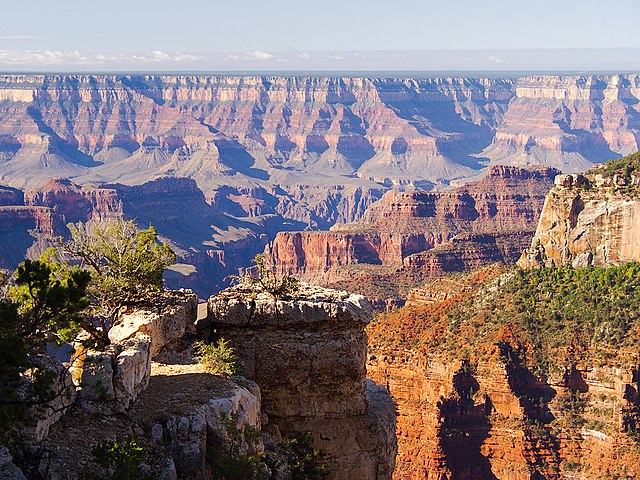Featured as a back-of-page article in the CSABC Quarterly Letter of September 2016
by David Kadylak
Anyone can see evidence for the global flood of about 4500 years ago when viewing rock layers such as from cuts in the road or visiting canyons. A very clear example (among many) occurs in the Grand Canyon between the rock layers called the Coconino Sandstone and the Hermit Shale. Take a look at the two photos below of these two rock layers, with the Coconino on top (the lighter rock) and the Hermit Shale below (the darker rock).

Figure 1: Grand Canyon view from the North Rim by Šarūnas Burdulis (CC BY-SA 2.0)

Figure 2: Coconino Sandstone Hermit Shale by brewbooks (CC BY-SA 2.0)
Notice in the first photo the extent over which these rock layers extend. Elsewhere in Arizona, a different sandstone layer lies between the two shown in the photograph. There is supposedly a 10 million year gap between the Coconino Sandstone and Hermit Shale.
Now take a look at the surface of the Grand Canyon in the following picture.

Figure 3: Grand Canyon – Mather Point by Jon Sullivan
Do you see all the erosion that has happened, leaving an uneven surface? Yet you are told to believe that 10 million years have elapsed between the Coconino and Hermit Shale, with virtually no erosion leaving a very flat contact plane between the two rock layers–clearly seen in the second photograph. There is a gap of time that doesn’t even exist, as the layer on top (Coconino) would have had to be laid down rapidly and quickly over the underlying rock (Hermit Shale) before much erosion took place. There is a gap in time that really isn’t even there at all.
Therefore, the record of the globe-covering Flood in Noah’s time is a trustworthy account of what happened and helps to make sense of what we see in the geology around us. Meanwhile, assumption-laden radiometric dating has created “missing” ages that has led people astray to believe there are long ages where there is no evidence for them.
